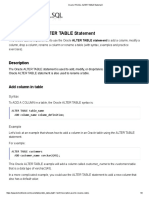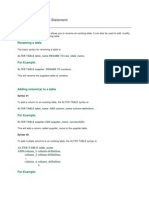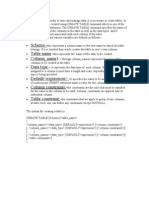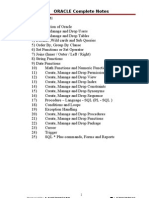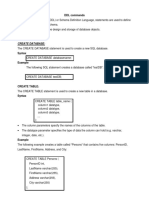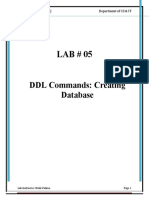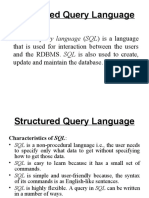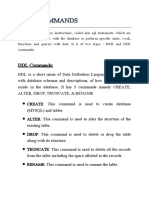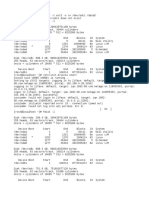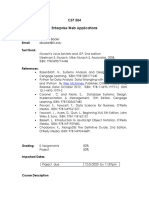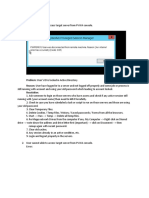0% found this document useful (0 votes)
3 views9 pagesP9 - DDL Commands
The document provides an overview of DDL commands in Oracle, specifically focusing on the CREATE TABLE, ALTER TABLE, and DROP TABLE statements. It includes syntax and examples for creating tables from existing tables, modifying table structures, and deleting tables. Additionally, it explains how to manage columns within tables, including adding, modifying, and dropping columns, as well as renaming tables and columns.
Uploaded by
prajapatsakshi005Copyright
© © All Rights Reserved
We take content rights seriously. If you suspect this is your content, claim it here.
Available Formats
Download as PDF, TXT or read online on Scribd
0% found this document useful (0 votes)
3 views9 pagesP9 - DDL Commands
The document provides an overview of DDL commands in Oracle, specifically focusing on the CREATE TABLE, ALTER TABLE, and DROP TABLE statements. It includes syntax and examples for creating tables from existing tables, modifying table structures, and deleting tables. Additionally, it explains how to manage columns within tables, including adding, modifying, and dropping columns, as well as renaming tables and columns.
Uploaded by
prajapatsakshi005Copyright
© © All Rights Reserved
We take content rights seriously. If you suspect this is your content, claim it here.
Available Formats
Download as PDF, TXT or read online on Scribd
/ 9


